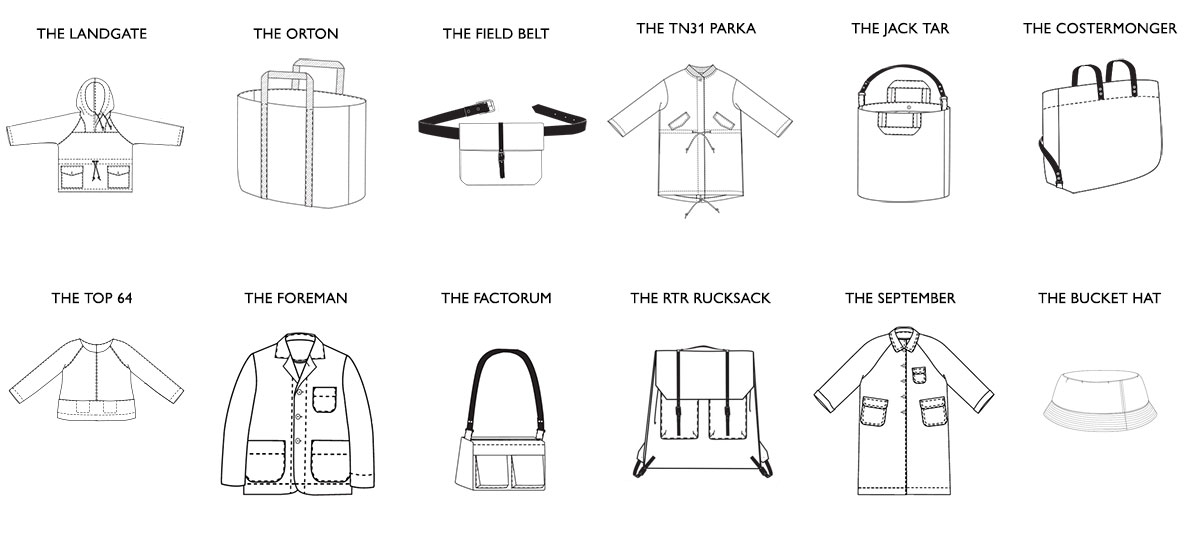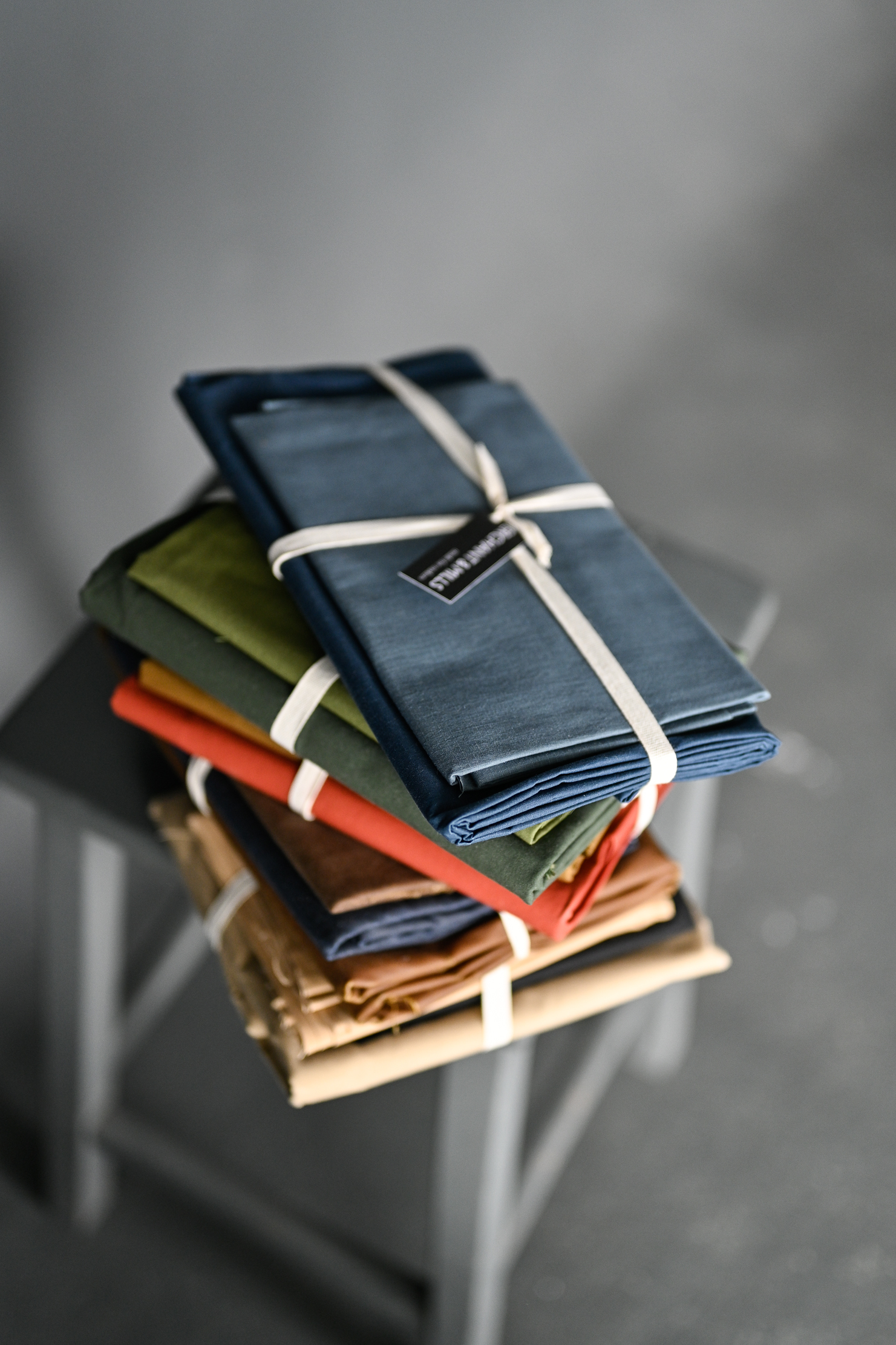
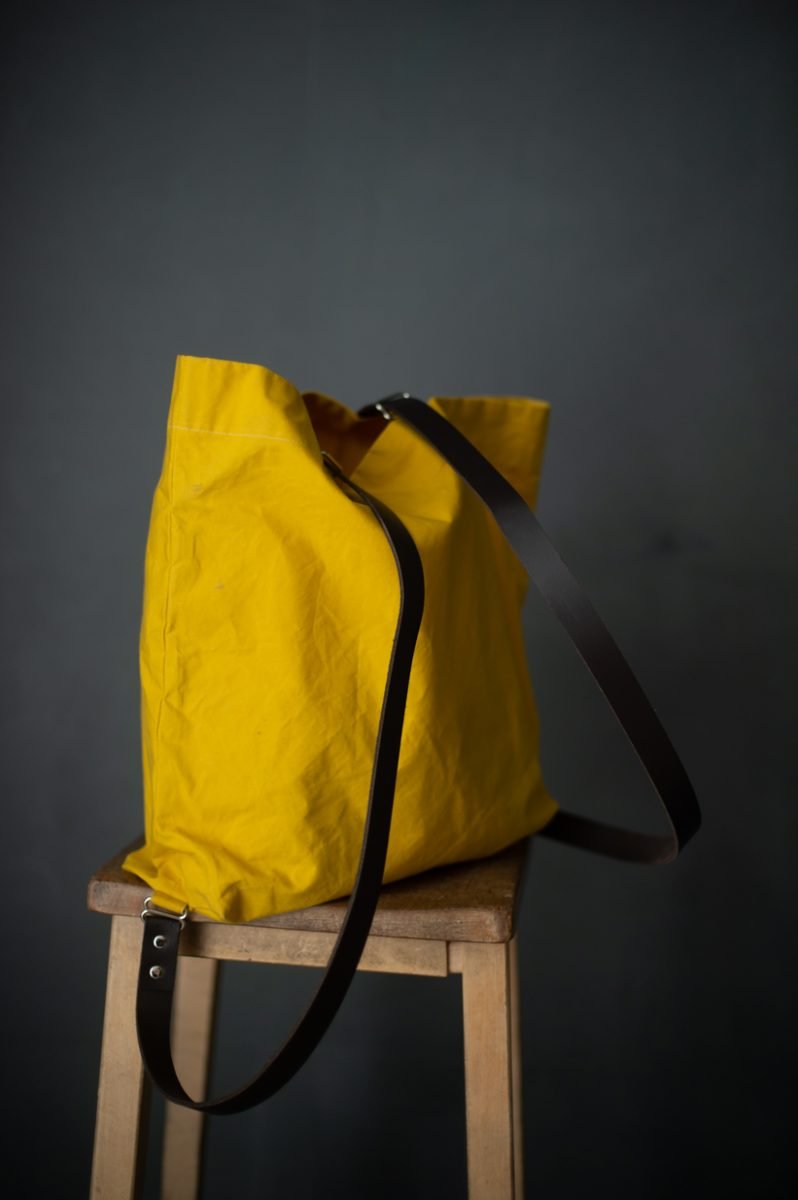
The Costermonger Bag in Yellow Organic Cotton Dry Oilskin
(1).jpg)
The Cloth
While new technical fabrics are being made all the time to contend with harsh weather conditions, oilskin cloth still holds a place as the original – and perhaps most versatile. It also happens to be one of our favourites. We currently have two ranges in our collection, Organic Oilskin (often referred to as waxed cotton) and Organic Dry Oilskin.
ORGANIC WAXED OILSKIN
Our organic cotton oilskin cloth is the most traditional of all our oilskins, often referred to as waxed cotton. The cloth is densely woven and processed to make it thirsty for the coating, and then submerged into a bath of petroleum-based wax. The oilskin is made water resistant from the coating itself, naturally repelling water.
Over time and use, the fabric develops a history of its own. It marks easily – crackling and creasing to give the cloth a more casual look, completely unique to how you wear it in.
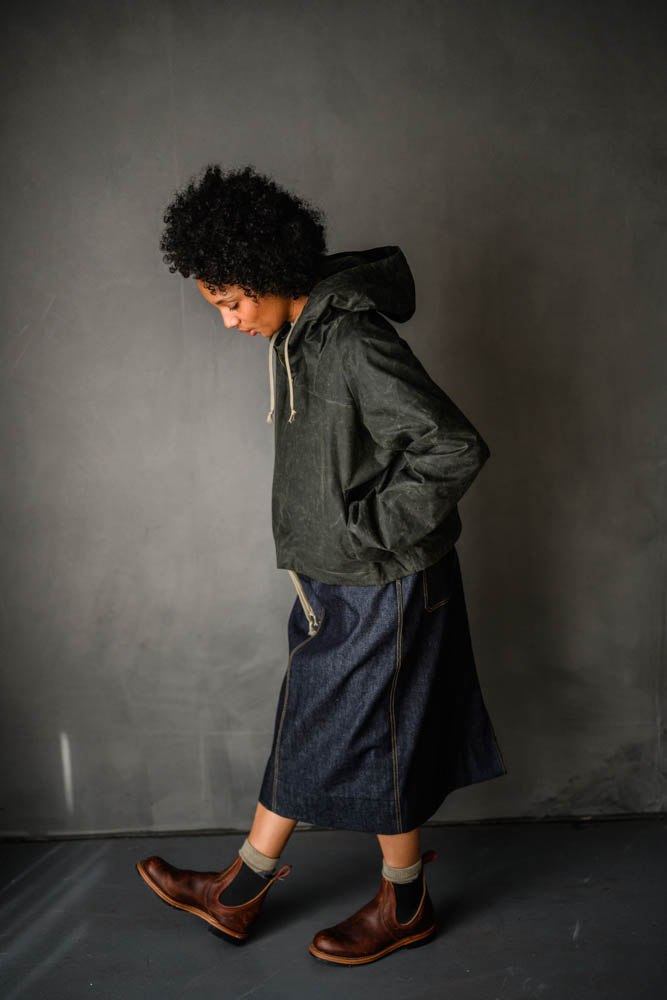
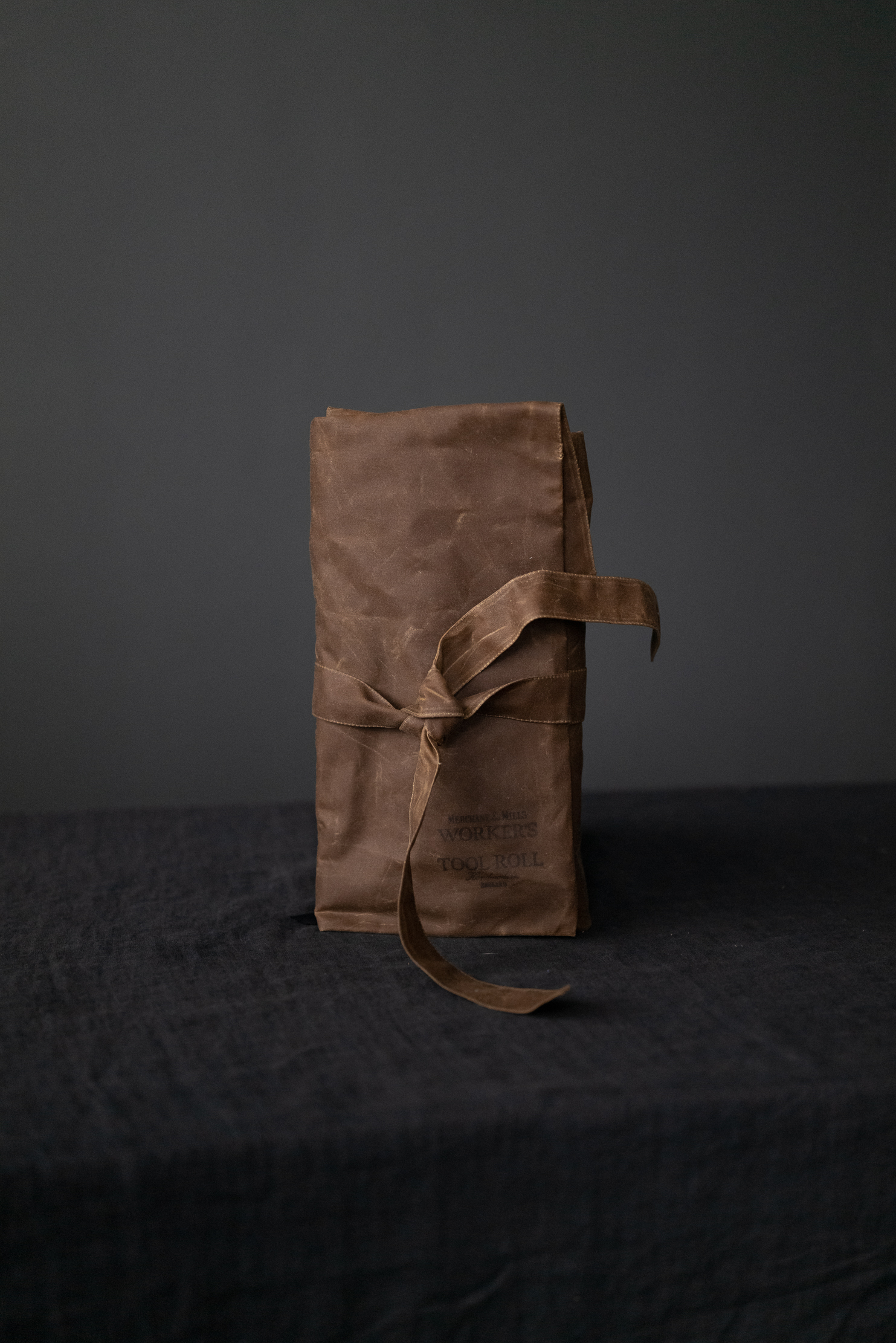
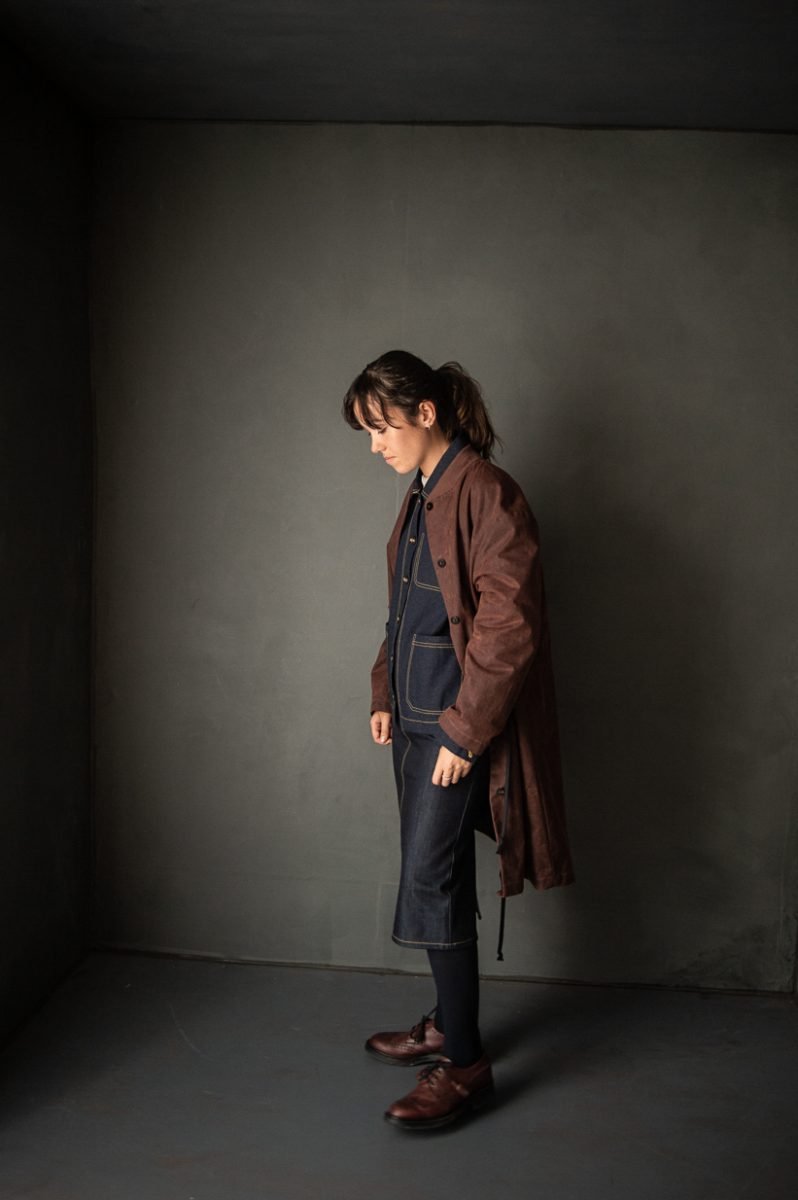
ORGANIC DRY OILSKIN
Our dry oilskin fabrics use the same GOTS organic cotton base as our traditional cloth – but is instead coated with an emulsified wax that is sprayed and cured onto the fabric. The main differences between our traditional waxed oilskin and our dry oilskin come down to its look and handle. Dry oilskin has a matte, more crisp appearancee that doesn’t scuff or crease. The cloth won’t really change or wear over time.
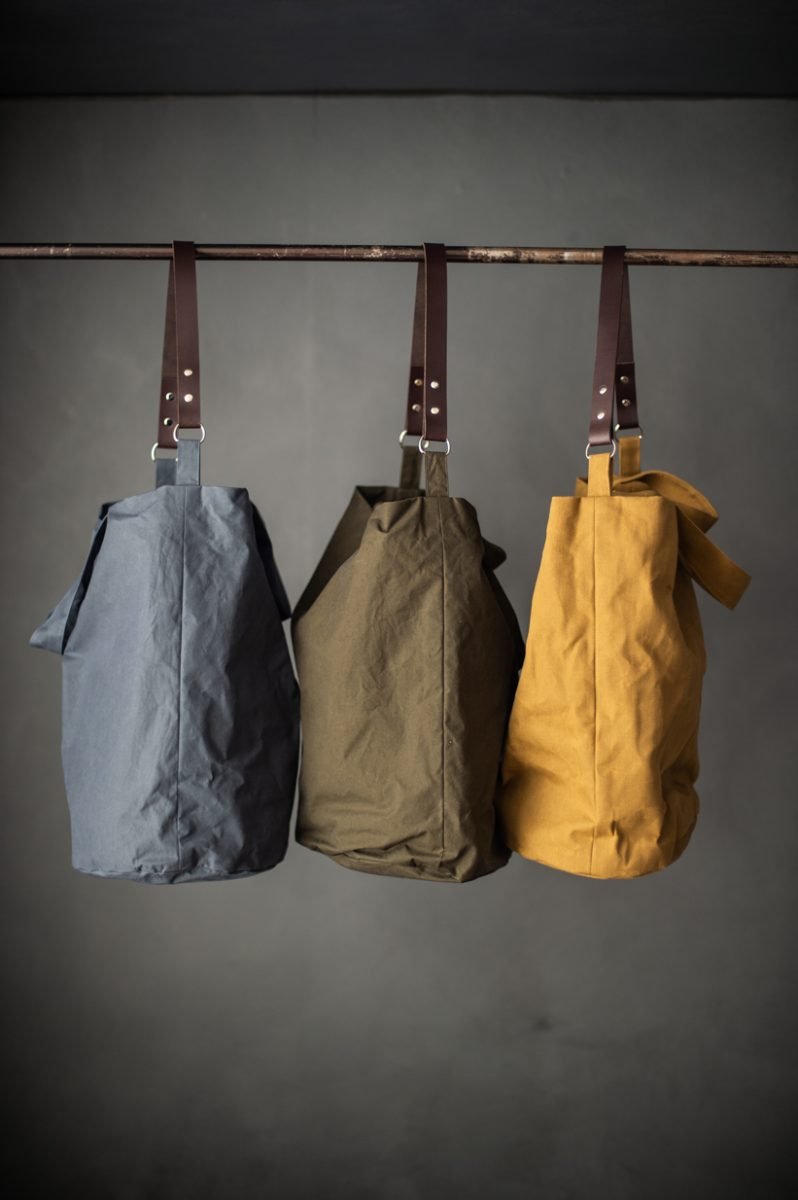
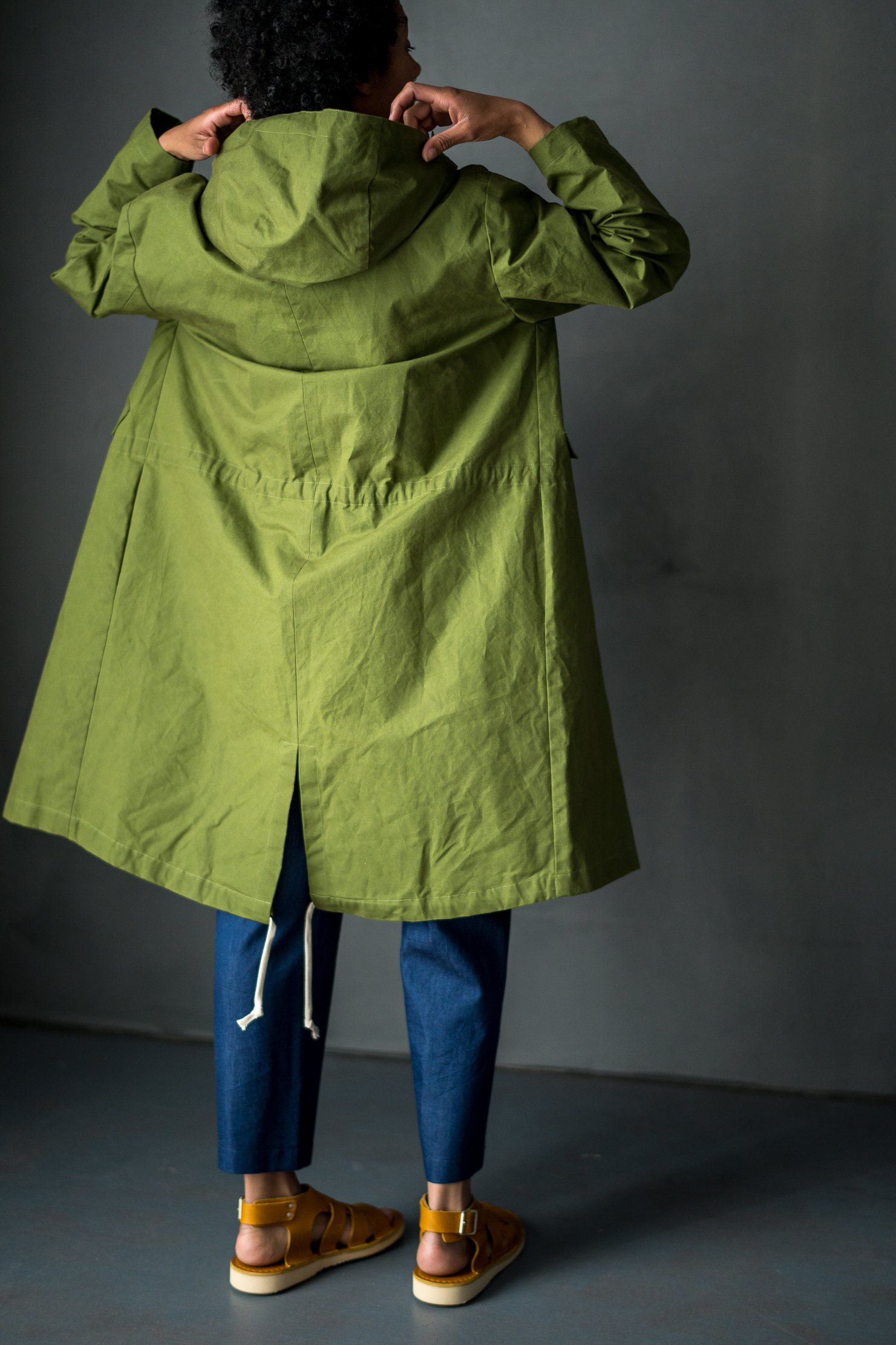
.jpg)
Production & Certification
Oilskin fabric was first made in the 15th century when Scottish fishermen discovered that their canvas sails caught the wind more efficiently when impregnated with linseed oil. And when the sail would come to the end of its life, they would recycle it into weather-resistant garments to wear while out at sea. Eventually, the practice became more widespread, and the proofing perfected to the cloth we have today.
The best oilskin is still made in the UK, where our range is produced. We work closely with our supplier to offer the very best, in a range of colours and finishes. Both our traditional waxed oilskin and dry oilskin are made using GOTS certified organic cotton. Our traditional waxed oilskin is then coated with a blend of oils and pretroleum based waxes, while our dry oilskin is treated with emulsified wax which is heat-processed into the cloth for a long lasting finish.
Suitable Patterns
How to sew oilskin
- While customers are often hesitant to work with oilskin – it’s a very stable fabric which makes it great for beginner sewists.
- We recommend using Sew All Thread (100% polyester) in your sewing machine, and your needle size will depend on what you’re making and how many layers of cloth you’re sewing. We generally suggest a size 14 sewing needle for our oilskin and dry oilskin fabrics if you’re sewing through one layer of cloth and we would then move up to a 16 if you’re sewing through multiple layers. As our beeswax oilskin is more lightweight, we’d start with a size 12 sewing needle and move up to a size 14 if you’re making something like The Landgate.
- Do not iron your oilskin as it will remove the barrier from your cloth. Instead, to ‘press’ your seams, use the blunt size of your scissors or a Bamboo Point Turner. You can even press your seams open with your thumb and index finger.
- As it’s a structured fabric, you also will never need to use interfacing with oilskin cloth.
- Marking with tailor’s chalk or pencil will have little impact as your lines will simply disappear, so mark your cloth with the point of small sewing scissors or a pin.
- Pin holes or etchings will puncture the fabric, so be careful to place pins within your seam allowance so the holes get lost in the stitching. If you need to unpick an area of stitching, rub the oilskin between your fingers to get rid of needle holes.
Fabric Care
How to pre-wash oilskin
Do not pre-wash oilskin cloth.
How to wash oilskin
Our traditional oilskin should not be washed. While dry oilskin can be washed, we generally advise against it as you will lose the water repellent finish and the surface texture may change. If you do choose to wash your dry oilskin, it should be washed on a cool cycle. Then, the oilskin would then need to be reproofed. Instead, we recommend gently sponging dirty areas of your oilskin garments with a damp cloth.
How to dry oilskin
Do not tumble dry oilskin, let it air dry.

